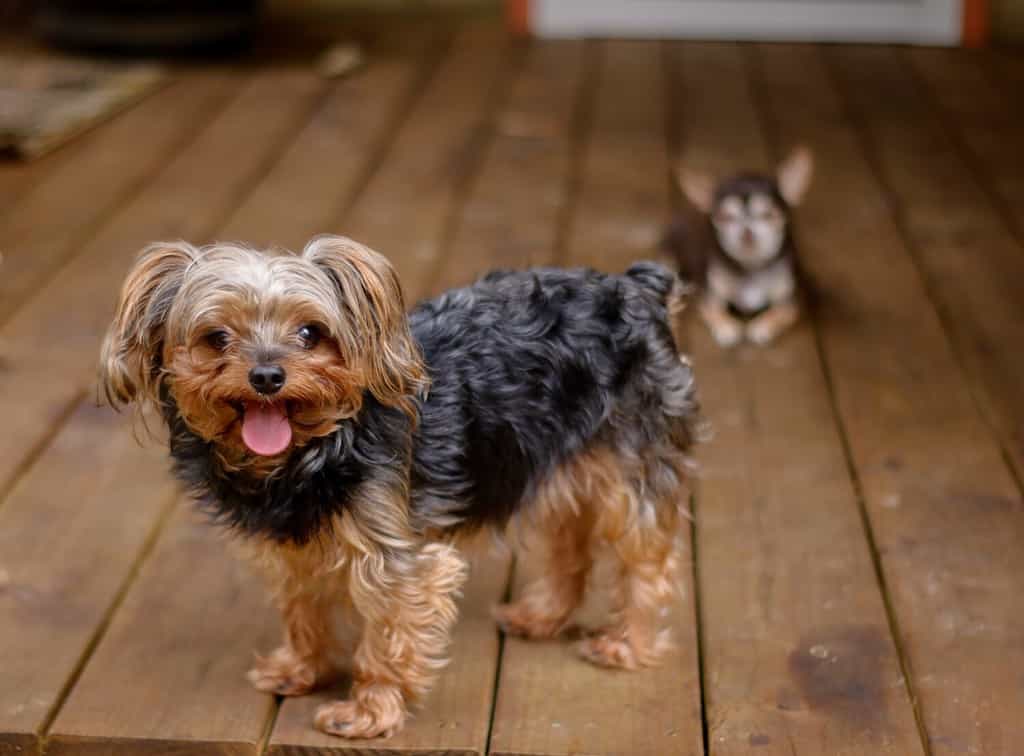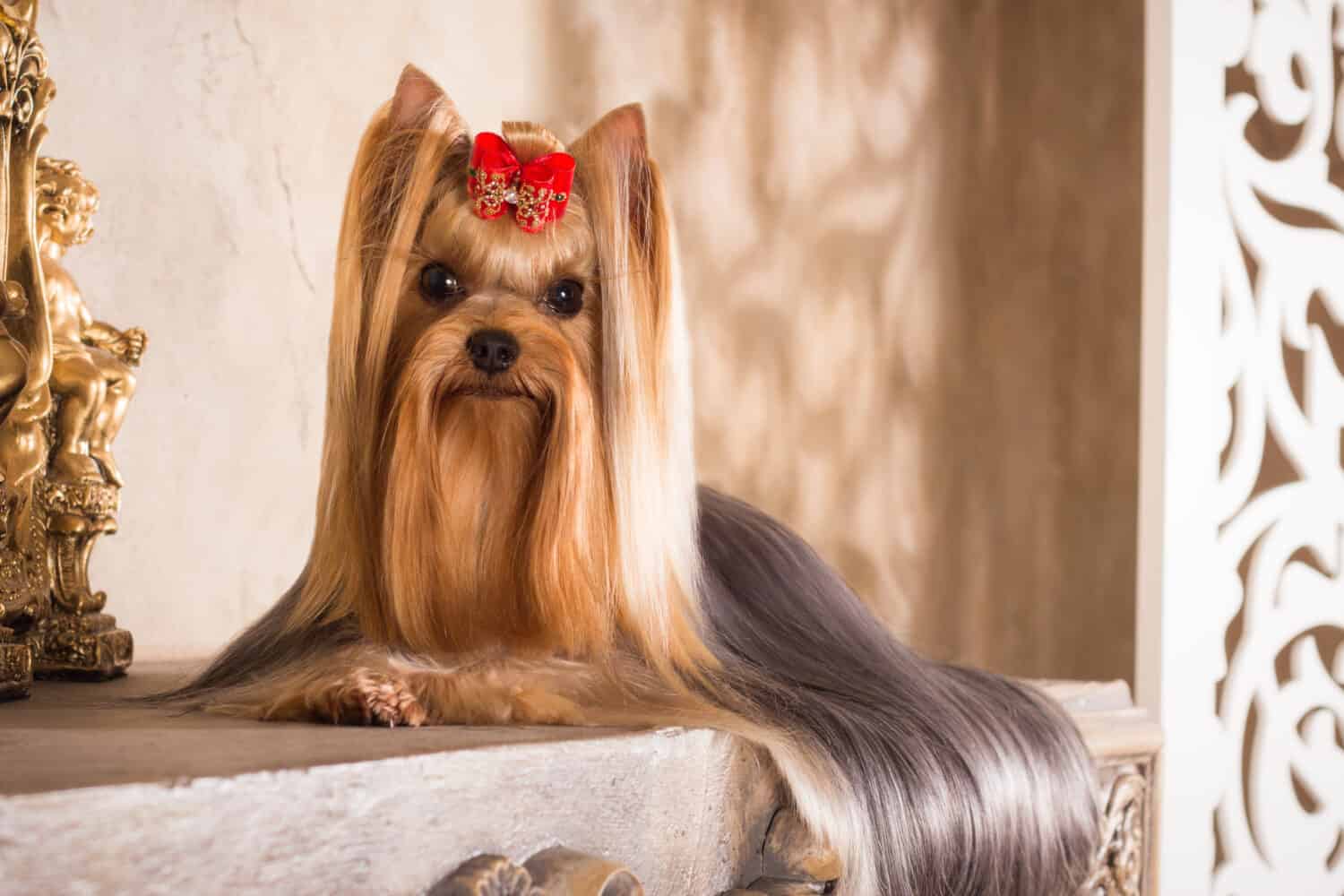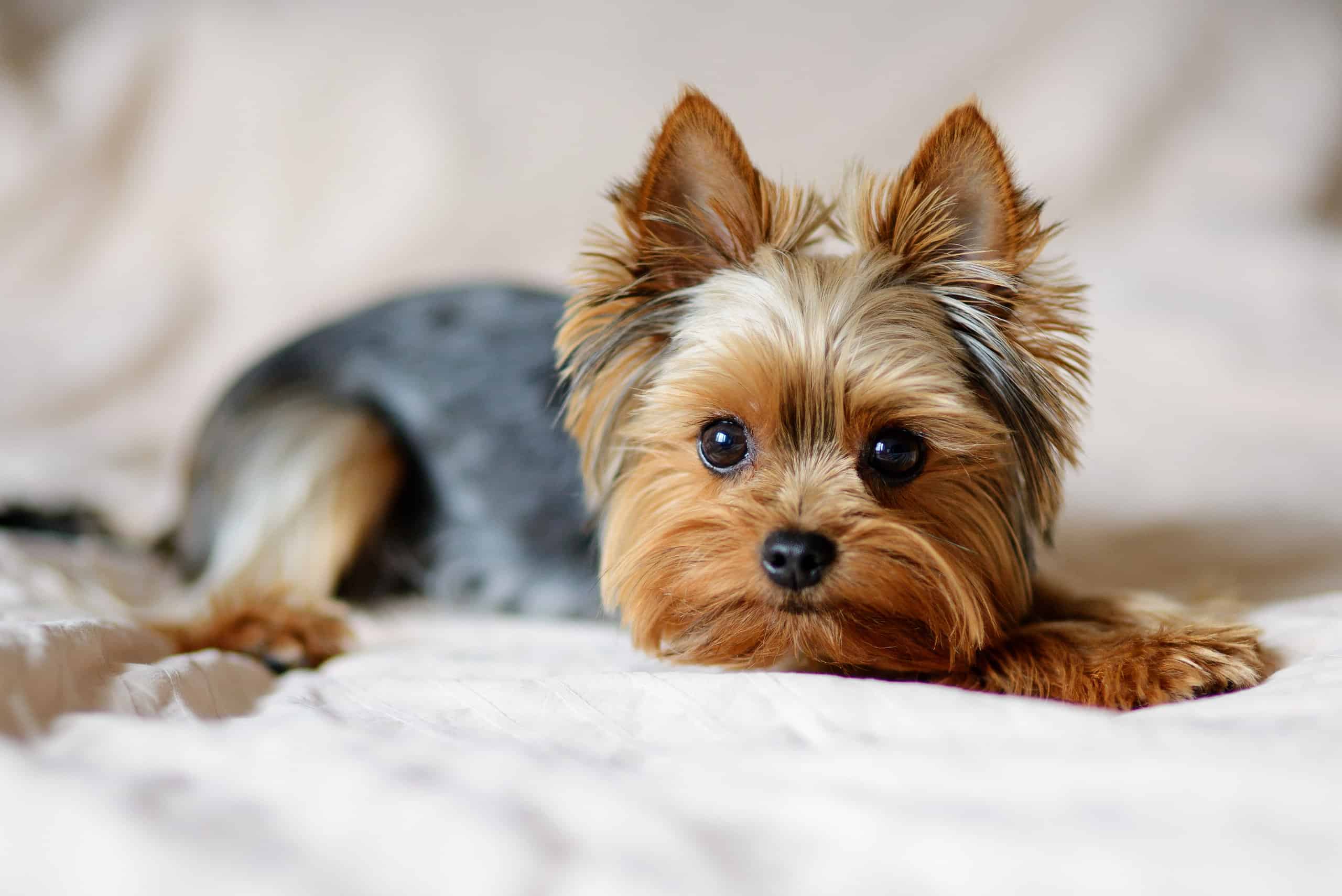Are you thinking of getting a Yorkie, but aren’t sure whether to choose a male or female pup? This quick guide will help you decide! We’ll go over the main differences between male and female Yorkies, as well as some special considerations for each sex.
Comparing a Male and Female Yorkie
| Male Yorkie | Female Yorkie | |
|---|---|---|
| Size | 8 to 9 inches, 5 to 7 pounds | 7 to 8 inches, 4 to 6 pounds |
| Distinct Traits | Slightly larger in build, may require slightly more maintenance | May require slightly less maintenance, somewhat smaller |
| Reproduction | Fertile at 6 mo., sexual maturity at around 24 mo. | Fertile at 6-18 mo., sexual maturity at around 24 mo. |
| Lifespan | 11 to 15 years | 11 to 15 years (but, on average, females live longer) |
| Temperament | Slightly more aggressive, very affectionate, may be clingy | Affectionate, may be more independent, slightly moody when unspayed |
| Trainability | Medium | Easy |
Key Differences Between a Male and Female Yorkie
Male and female Yorkies are actually very similar, perhaps more so than different sexes in many other dog breeds. Their biggest difference comes down to their temperament and personality traits — and not, for example, physical traits.
Both males and females are feisty, but males will usually be more devoted to their owners. They may enjoy cuddles and kisses much more than their female counterparts! This is quite surprising, as females are usually the more affectionate sex in other breeds.
In fact, female Yorkies often exhibit traditionally masculine traits, such as aggressiveness, assertiveness, and dominance, more so than males.
Male vs. Female Yorkie: Size

Both sexes are small in size, with males being only slightly bigger than females.
©My Bokeh Life/Shutterstock.com
Yorkies are a small breed, with only a slight difference in size between males and females. Females, on average, tend to be one inch shorter and one pound lighter.
- Males range between eight and nine inches in height and five to seven pounds in weight.
- Females range between seven and eight inches in height and four to six pounds in weight.
Both sexes stop growing at around one year of age, and their growth typically starts slowing down when they are nine or ten months old. Their size makes them the perfect dogs for apartment-based families.
Male vs. Female Yorkie: Physical Traits

Whether male or female, Yorkies have beautiful, typically two-colored coats.
©Kseniya Zhuk/Shutterstock.com
Male and female Yorkies don’t really differ all that much when it comes to physical traits. Both tend to have long, silky coats. However, males may require slightly more grooming as they’re likelier to be more playful and get dirty often. Luckily, neither of the sexes is prone to excessive shedding.
The American Kennel Club recognizes four standard Yorkshire Terrier colors: blue and gold, blue and tan, black and tan, and black and gold.
Male vs. Female Yorkie: Reproduction
Female Yorkies may take slightly longer to become fertile than males. In both sexes, though, this process can begin as early as six months of age.
However, that doesn’t mean that they’re necessarily ready to start breeding. Both males and females usually reach sexual maturity at around two years of age. Females, however, will experience heat cycles every four to six months, so be wary of mood swings or potential aggressive behavior that may occur during this time.
Male vs. Female Yorkie: Health Considerations

Regular vet check-ups can go a long way, especially with an overall healthy breed like this one.
©iStock.com/Kateryna Kukota
Yorkshire terriers are a pretty healthy breed. However, both males and females can experience certain health issues, especially as they age. Some are common in all small breeds, while others are more typical of Yorkies.
These health issues include:
- Allergies
- Dental disease, which usually starts with tartar build-up
- Eye issues, such as cataracts
- Liver problems, especially portosystemic shunt (PSS)
- Cushing’s disease
- Heart issues, especially patent ductus arteriosus (PDA)
- Bone and joint issues, such as patellar luxation
To keep your Yorkie healthy for longer, make sure to do regular vet check-ups and give them plenty of opportunities for physical exercise. You should also consider spaying or neutering your pup to prevent certain types of cancer. If you decide to do so, try to schedule the operation as soon as possible — i.e., while your pup is still young. This will help reduce the risk of potential trauma.
Male vs. Female Yorkie: Temperament
Both male and female Yorkies are extremely tenacious, feisty, confident, and sometimes even bossy. Males can be more aggressive than females but also, perhaps surprisingly, more clingy. They are also likelier to be more affectionate and attached to their owners.
Females, on the other hand, tend to be more independent and even more territorial, which can sometimes negatively influence their behavior in multi-pet households. So, if you already have other pets, especially dogs, male Yorkies may be a slightly better option than females.
However, both sexes tend to get along with other animals just fine, including cats.
Male vs. Female Yorkie: Response to Training

Both female and male Yorkies are highly intelligent, which is partly why they’re also highly trainable.
©Tanya Kalian/Shutterstock.com
Yorkshire terriers are highly intelligent and trainable, with females usually being slightly easier to train than males.
Nevertheless, if you decide to get a Yorkie, you should have no issues training them — whether male or female. These pups are smart and love to please their owners, so they usually respond well to reward-based training methods.
Ready to discover the top 10 cutest dog breeds in the entire world?
How about the fastest dogs, the largest dogs and those that are -- quite frankly -- just the kindest dogs on the planet? Each day, AZ Animals sends out lists just like this to our thousands of email subscribers. And the best part? It's FREE. Join today by entering your email below.
Thank you for reading! Have some feedback for us? Contact the AZ Animals editorial team.








